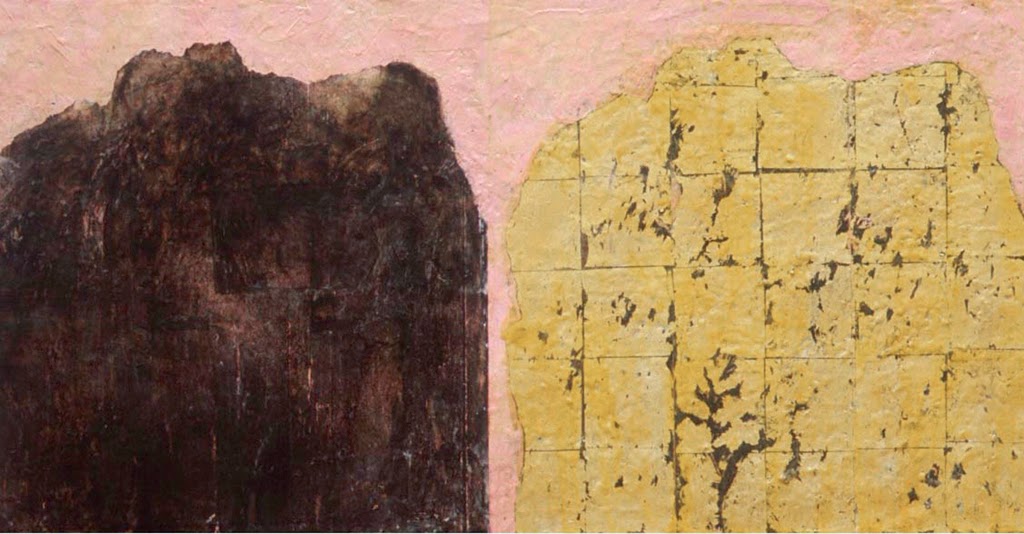This is the fourth of the three posts
presenting and developing my recent
slide talk Contemporary Art as Buddhist Practice
In the last post, I described the practice of painting the landscape
directly in the open air and how that can be brought into
a practice not unlike the meditation called
Mindfulness of Phenomena (1)
Continuing:
The
other path is followed in the studio mostly,
where I
construct paintings from diverse materials.
I
employ chance operations, some
disciplined, and some free.
Within
the open exploration of form lies
a memory (a dream) of
sky, water,
mountain, wind, desert,
rock, and shore.
I move the forms toward a new order that, with luck, becomes
something simple,
something simple,
a
new wholeness, though ringing with complex relations.
This
is true whether or not the initial motif remains intelligible.
Meaning
is found where mind, subject and material come together.
The
materials have no inherent meaning and
neither have any of my usual landscape subjects.
But in my mind, I find them meaningful, and
when present with an appearance of a
lake or a hillside of trees,
I am often struck still and dumb with
a sense of significance.
John Berger is a special writer,
sensitive and clear. He described
such a moment this way:
“At
the moment of revelation when
appearance and meaning become identical, the
space of physics and the seer’s inner space coincide: momentarily
and exceptionally the seer achieves
an equality with the visible. To
lose all sense of exclusion; to be
at the centre.”
We tend to understand things
metaphorically. Art uses this tendency effectively.
Buddhist teaching, and Buddhist
art through the centuries, have used metaphor effectively.
The
specific landscape motifs all function
metaphorically in Asian landscape painting,
which developed for close to 2,000
yrs in relation to Buddhist and Daoist insight into the nature of mind and the forces of the world around.
Repetitions in my work refer to
the returning again and again and again to
awareness. Presence.
I’ll use text, or the appearance of text, as
a reference to mantra or prayer,
or
to a spontaneous utterance.
Currently, I am working toward simplicity and restraint.
I suspect that analogies are
still a layer between what I think
and feel and what just is.
the just-as-it-is-ness carries
presence
So simple ; yet not so easy to pull off.
I’ll close with a stanza from
the Aspiration Prayer for Mahamudra:
Look
at objects and there is no object: one sees mind;
Look
at mind and there is no mind: it is empty of nature;
Look
at both of these and dualistic clinging subsides on its own.
May
I know sheer clarity, the way mind is.
Thank You
˜˜˜˜˜˜˜˜˜˜˜˜˜˜˜˜˜˜˜˜˜˜˜˜˜˜˜˜˜˜˜˜˜˜˜˜˜˜˜˜˜˜˜˜˜˜˜˜˜˜˜˜˜˜˜˜˜˜˜˜˜˜˜˜˜˜
Mindfulness of Body, Mindfulness of Feelings and Mindfulness of Mind.














Jef,
ReplyDeleteI continue to receive encouragement from your works, both painting and writing, to persevere. Thank you for sharing your works. Jer